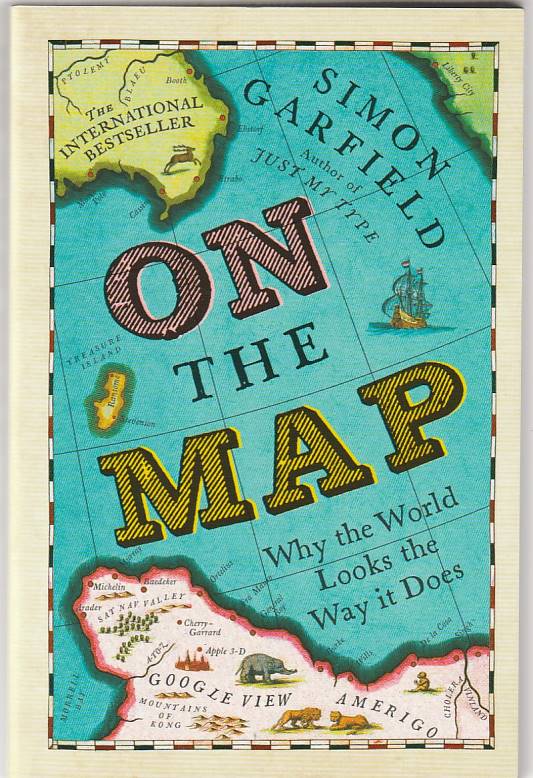
The Internet has effected an extraordinary and significant change. Before astronomers faced the gallows for suggesting otherwise, our earth stood firmly at the centre of the cosmos; not so long ago, we placed Jerusalem at the centre of our maps; or if we lived in China, Youzhou. Later, it might be Britain or France, at the heart of their empires. But now we each stand, individually, at the centre of our own map worlds. On our computers, phones and cars, we plot a route not from A to B but from ourselves (‘Allow current location’) to anywhere of our choosing; every distance is measured from where we stand, and as we travel we are ourselves mapped, voluntarily or otherwise. Earlier this year, a friend of mine noticed an odd thing on his Blackberry.
He was walking in the Italian Alps and wanted to check out contours and elevations. When he turned on his phone his bicycle app was open: a handy tool where you put in a London location and it tells you how many bikes are available at each docking station. It was less use in Italy, or so he thought. But, in fact, the app was still working and the map spread out from cycle routes in London to cover the entire world. My friend could plot a route to Ravello, Cape Town or Auckland. Wherever he went, he was the map, the pivot around which the world diligently spun. And the app was no doubt tracking him, too, so that someone knew which Italian mountain he was on, as well as who was riding the bike he had docked the day before. How on earth did we get to this point?
On The Map is intended as an answer to that question, but it could also be viewed as a journey around an exhibition. It is by necessity an imaginary show, for it contains things that would be impossible to gather in one place: long-destroyed impressions of the world from Ancient Greece, famous treasures from the world’s universities, some jaw-dropping pieces from the British Library and the Library of Congress, rare items from Germany, Venice and California. There will be manuscripts, sea charts, atlases, screen grabs and phone apps. Some exhibits are more important than others, and some are just displayed for amusement. The range will be extensive: poverty and wealth maps, film maps and treasure maps, maps with a penchant for octopuses, maps of Africa, Antarctica and places that never were. Some of the maps will explain the shape of the world, while others will focus on a street or on the path of a plane as it flies to Casablanca.
 €9
€9
The Internet has effected an extraordinary and significant change. Before astronomers faced the gallows for suggesting otherwise, our earth stood firmly at the centre of the cosmos; not so long ago, we placed Jerusalem at the centre of our maps; or if we lived in China, Youzhou. Later, it might be Britain or France, at the heart of their empires. But now we each stand, individually, at the centre of our own map worlds. On our computers, phones and cars, we plot a route not from A to B but from ourselves (‘Allow current location’) to anywhere of our choosing; every distance is measured from where we stand, and as we travel we are ourselves mapped, voluntarily or otherwise. Earlier this year, a friend of mine noticed an odd thing on his Blackberry.
He was walking in the Italian Alps and wanted to check out contours and elevations. When he turned on his phone his bicycle app was open: a handy tool where you put in a London location and it tells you how many bikes are available at each docking station. It was less use in Italy, or so he thought. But, in fact, the app was still working and the map spread out from cycle routes in London to cover the entire world. My friend could plot a route to Ravello, Cape Town or Auckland. Wherever he went, he was the map, the pivot around which the world diligently spun. And the app was no doubt tracking him, too, so that someone knew which Italian mountain he was on, as well as who was riding the bike he had docked the day before. How on earth did we get to this point?
On The Map is intended as an answer to that question, but it could also be viewed as a journey around an exhibition. It is by necessity an imaginary show, for it contains things that would be impossible to gather in one place: long-destroyed impressions of the world from Ancient Greece, famous treasures from the world’s universities, some jaw-dropping pieces from the British Library and the Library of Congress, rare items from Germany, Venice and California. There will be manuscripts, sea charts, atlases, screen grabs and phone apps. Some exhibits are more important than others, and some are just displayed for amusement. The range will be extensive: poverty and wealth maps, film maps and treasure maps, maps with a penchant for octopuses, maps of Africa, Antarctica and places that never were. Some of the maps will explain the shape of the world, while others will focus on a street or on the path of a plane as it flies to Casablanca.